A photo to die for
The impact of social media on our lives is evident in every element. What started as a little ripple at Harvard Campus in the U.S.A has morphed into a tsunami that has washed over the world. Add technological developments of the smartphone and internet portability, we can “connect” and “share” anytime, anywhere.
While there are many benefits to these advances and the global awareness it allows, there are some other more worrying ramifications. Without going too deep into the social media phenomena, let’s just talk about its impact on Landscape Architecture. It may seem like a bit of leap to make but social media has effected not only the way we interact with each other but also the way we interact with the landscape around us. While once we used to take the odd snap as a memory at a beautiful lookout these spots are now crowded with visitors jostling with their selfie sticks to get that perfect shot which is instantly uploaded with the hope of getting as many likes/comments as possible. The sound of crashing waves against an impressive cliff face is now frequently accompanied by the buzz of a drone flying overhead. While we used to crowd around to see the view, we now crowd around a photo of the view and assess it’s share-ability. Shifting appreciation from the experience provided by the destination to the thrill of getting more likes, giving rise to the “selfie-gaze” tourist. For Landscape Architecture, this translates to designing viewing platforms and trail designs that don’t just showcase the essence of the place but offer a platform for visitors can get their photo, known now as an “iconic sharable moment”.
However, it is not so much your run of the mill selfie which has started to impact the way we need to design our iconic destinations, it is the rise of the “Danger Selfie”. You know the ones…that yoga pose on the edge of a cliff….someone hanging over a boat with sharks swimming beneath them. That irresistible combination of danger and beauty.
This has lead to destinations becoming insta-famous, leading to an explosion of visitors. The Royal National Park has two such destinations: Figure Eight Pools and Wedding Cake Rock. According to a recent ABC News article visitors to Wedding Cake Rock surged from 2,000 to 10,000 in 2015. These numbers continue to rise to a conservative estimate of a whopping 50,000 – 100,000 visitors per year . The story is similar for Figure Eight Pools. The issue with both of these destination is that they are unsafe.
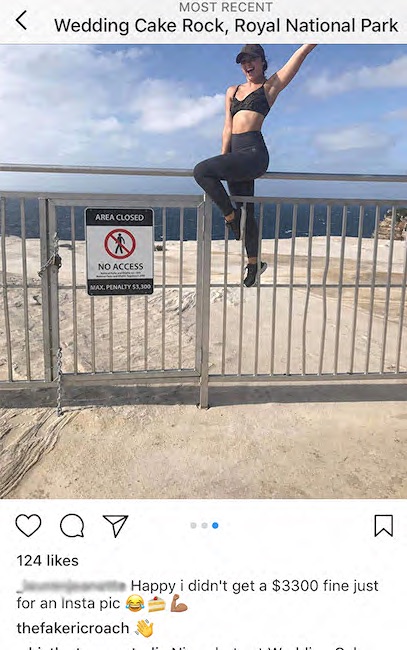
A geotechnical report for Wedding Cake Rock confirmed that it would slide off the side of the cliff in the next decade. NSW National Park & Wildlife has erected a 1.6m fence to stop people from going out on the rock due its inevitable crumbling and certain death for anyone standing on the rock when this happens. They have erected signs that run along this fence stating the danger of the rock with warnings like “Do not risk your life for a photo”. Fines range from $300 to a staggering maximum $3,300 fine if visitors are found on the other side of the fence. The police have even been called in the help park rangers monitor the area. You would think that this would be sufficient warning and deterrent for visitors to clamber onto the rock. It is not. Visitors literally climb over the fence to take their photo, with the obligatory selfie mid climb…comments like “Happy I didn’t get a $3300 fine for an insta pic” #adventure #gottagetthatphoto.
Figure Eight Pools is known for its highly likeable shot of someone in a picturesque natural pool shaped like the figure eight. What social media does not tell prospective visitors that the area is highly susceptible to tidal and weather patterns. It is also a 3-4 hour walk round trip down narrow slippery paths that many tourists undertake in flip flops and bathers, without sufficient water. Most are totally unprepared for the experience, despite the very clear information on the National Parks Website. In 2016, 70 visitors were injured during a freak wave, however despite or perhaps because of the warnings, tourists still flock to the site.
In May this year, a 20 year old man died falling down a 40 metre sheer cliff while attempting to take a picture at The Gap in Albany Western Australia. Great Southern Police District Superintendent Dom Wood said of the group “They weren’t actually on the viewing platform, they were on the rocks with no protection whatsoever”. Another example of ignoring signs or common sense in the hope of getting a picture, the news is full of similar tragedies.
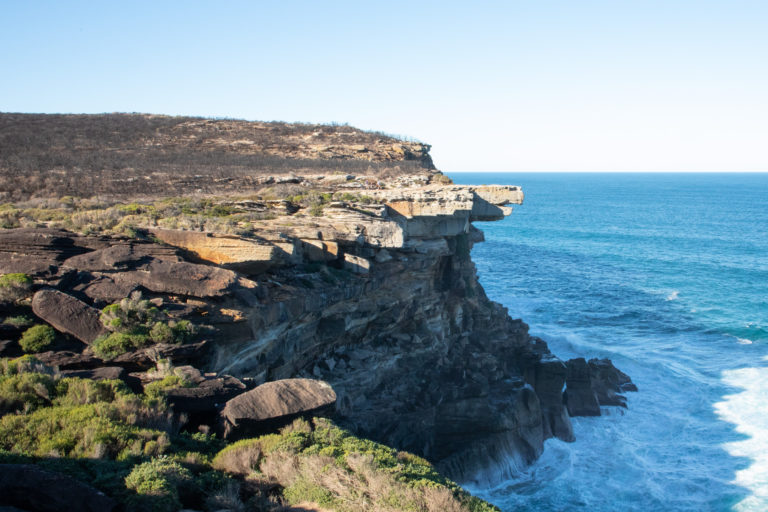
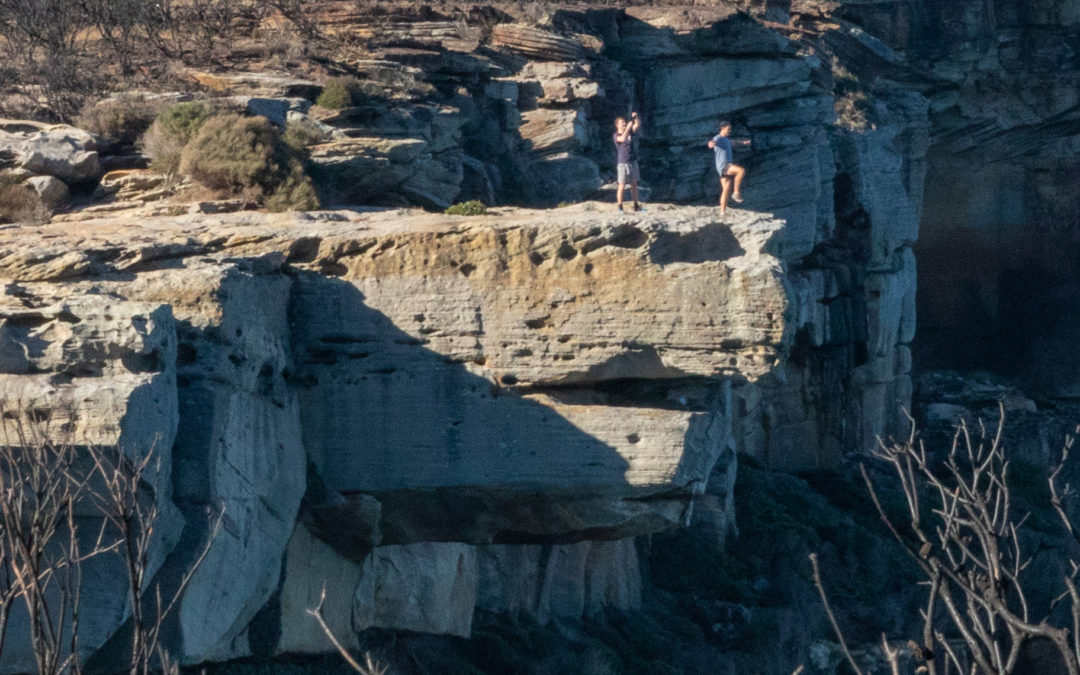
This impact is real and raises a number of questions. Have we become so obsessed with that perfect shot that we completely ignore the very real dangers that are present in the natural environment? Are we such a nanny state that people are ignoring the excessive use of danger signage, thinking that it more an OH&S tick the box rather that real danger? Is there a need for authorities to take people’s ability to use their common sense away and literally build a fence between them and obvious danger? Where is the line between people’s own responsibility for their safety and those that manage the environments they move in? Has the trend to over safety proof experiences resulted in people having not experience and therefore ability to assess risk?
When we look at the trend world wide there is no clear answer. We have situations like Wedding Cake Rock, where fences are erected. The Three Capes in Tasmania, has walking trails along the coast line and no such need for fencing, signage is sufficient. Heading overseas, World’s End in Sri Lanka offers breathtaking views from a 1,200m high viewing platform that does not even have a hand rail. In the USA, Mather Point at the world renowned Grand Canyon, has used meshed handrail that curve inward to keep visitors safe.
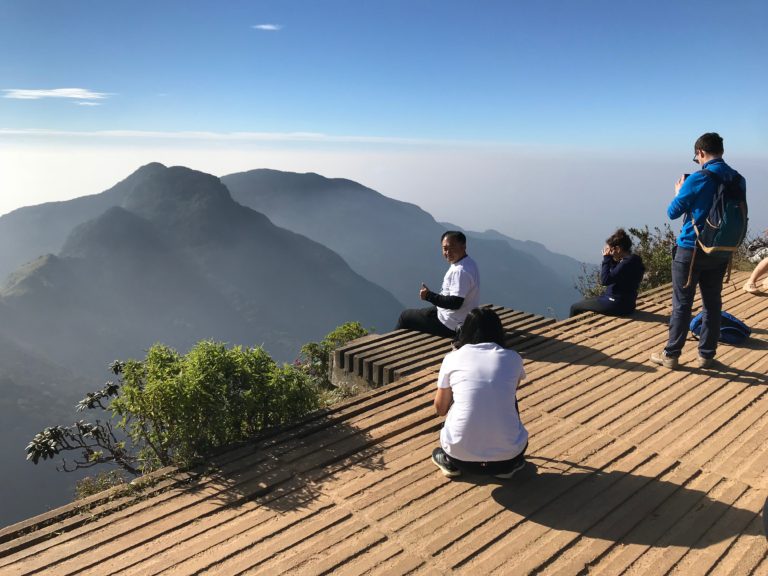
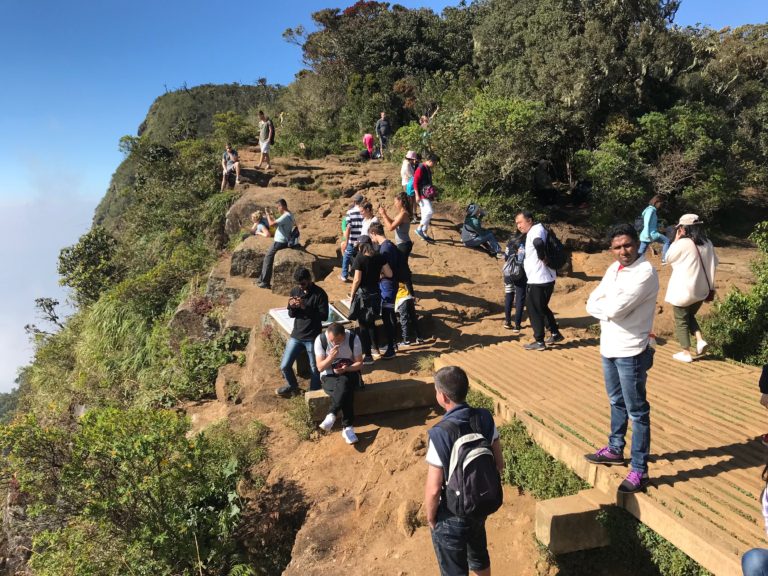
While Australia certainly does not have the freedom to have no handrails at all, there is some flexibility with the level of safety provided in areas that present danger to the public. In the face of the rise of the danger selfie, does this protection need to be increased or will public sensibility eventually prevail? Will it take something truly tragic to happen, like Wedding Cake Rock crumbling under the feet of 60 tourists who have ignored the warning signs or could this trend fade out like planking? Could social media start to cultivate a sense of respect for nature and how we interact with it, the way it has done with the global campaign against the use of plastic?
It is our hope that the danger selfie trend will slow down, education and respect for the natural environment will increase. That Landscape Architectural design will continue to be able to tell the story of the landscape and showcase nature at its most magnificent, not simply photogenic. That our need to photograph and share everything will lessen and desire to sit, experience and breath in the history and the wonder of our environment with prevail. Now that, would get a “like” from us here at NewScape Design.
Written by: Katie Haire and John Newman. NewScape Design